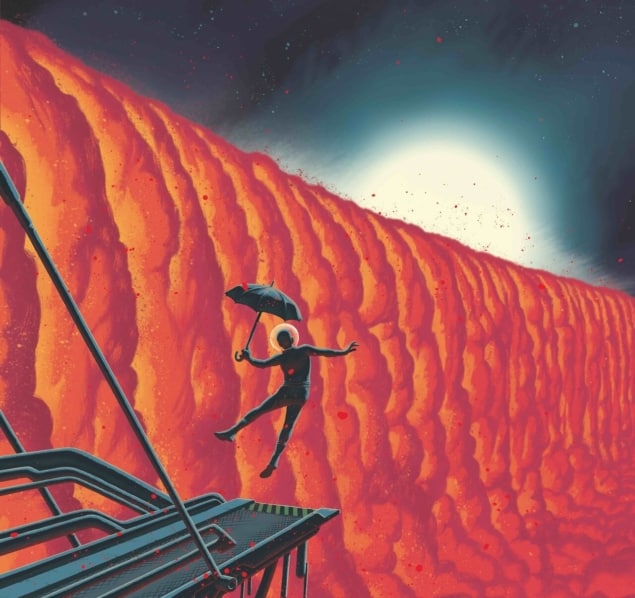
It could be raining molten iron on some exoplanets, according to David Ehrenreich at the University of Geneva and an international team of astronomers. The team discovered evidence for the metallic precipitation in atmospheric spectra of the giant, ultra-hot planet WASP-76b that is about 390 light-years from Earth. Their findings could provide new insights into the exotic chemistry that plays out in the atmospheres of such hot gas giants.
“Hot Jupiters” such as WASP-76b comprise a widely studied group of giant exoplanets that orbit close to their host stars, where they can experience daytime temperatures exceeding 2000 K. Such conditions are extreme enough to break down molecules in the planets’ atmospheres into individual atoms, which recombine back into molecules during the cooler nights. Clearly, this effect would produce extreme differences in atmospheric chemistry between both sides of these planets, but so far, astronomers have not confirmed this asymmetry through direct observations.
In the new study, Ehrenreich’s team has measured such a chemical gradient for the first time, using the ESPRESSO spectrograph at the Very Large Telescope (VLT) in Chile. With the instrument, the researchers could collect light from any combination of the VLT’s four 8-metre telescopes. This provided them with sufficiently high spectral resolution to check for differences in the absorption spectra produced by the atmosphere on the day and night sides of WASP-76b as it passed in front of its host star. In particular, they looked for a gap in the star’s spectrum corresponding to the characteristic wavelengths absorbed by atomized, or “neutral” iron.
Dusk and dawn
Because of the orientation of a transiting exoplanet, it is difficult to obtain its day- and night-time spectra. This is because (from our perspective) the day side is on the far side of the planet and the night side is always dark. However, Ehrenreich and colleagues could observe the atmosphere during dusk and dawn by focusing on the ring of starlight that passes straight through WASP-76b’s atmosphere. As Ehrenreich’s team had predicted, a neutral iron absorption line is visible on WASP-76b’s evening side, but not on its morning side.

Hubble detects hot exoplanet’s stratosphere
The observation confirmed that neutral iron is indeed produced on WASP-76b during hottest part of the day – but becomes far less abundant over the course of the night. Overall, these observations suggest that neutral iron in the atmosphere of WASP-76b condenses during the night to form clouds of liquid droplets – the most stable form of recombined iron atoms. This could then cause molten iron to rain down on the exoplanet during the night, before being atomized again during the day. In the future, Ehrenreich’s team hope that the process could be understood in more detail through 3D global climate models.
The observation is described in Nature.



